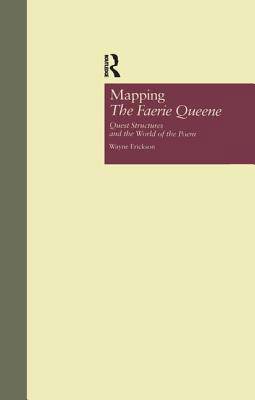
- Afhalen na 1 uur in een winkel met voorraad
- Gratis thuislevering in België vanaf € 30
- Ruim aanbod met 7 miljoen producten
- Afhalen na 1 uur in een winkel met voorraad
- Gratis thuislevering in België vanaf € 30
- Ruim aanbod met 7 miljoen producten
Zoeken
€ 102,45
+ 204 punten
Uitvoering
Omschrijving
This book analyzes the Faerie Queene's setting, examining Spenser's quest structures and his ideas about epic, romance, and history. Critics almost invariably treat Spenser's Faeryland as coextensive with the world of the poem, but this is not the case; rather, Faeryland is part of an epic cosmos reaching from heaven and the abode of the classical deities to demonic underground realms. Spenser situates Faeryland within a specific spatial and temporal terrestrial geography in which locations outside Faeryland represent various heroic settings in political history. The politico-historical world built around Faeryland is ripe for analysis by contemporary historicist critics. Spenser uses political geography, in conjunction with the time-inclusive medium of Faeryland, to coordinate several transhistorical quests that create a pattern of temporal mediations among sixth-century British, 16th-century English, and biblical and prophetic versions of history. He juxtaposes chronicle history, empirical historiography, and cultural myth while manipulating genre to create a world capable of accommodating his grand romantic epic design. In mapping the world of The Faerie Queene, the book provides a widened context for Spenser's quest structures, a significant contribution to the study of the poem's relation to history, and a new perspective from which to view Spenser's debts to classical epic, Italian romantic epic, and his native medieval inheritance. Index.Bibliography.
Specificaties
Betrokkenen
- Auteur(s):
- Uitgeverij:
Inhoud
- Aantal bladzijden:
- 160
- Taal:
- Engels
- Reeks:
Eigenschappen
- Productcode (EAN):
- 9781138995604
- Verschijningsdatum:
- 26/08/2016
- Uitvoering:
- Paperback
- Formaat:
- Trade paperback (VS)
- Afmetingen:
- 140 mm x 216 mm
- Gewicht:
- 195 g

Alleen bij Standaard Boekhandel
+ 204 punten op je klantenkaart van Standaard Boekhandel
Beoordelingen
We publiceren alleen reviews die voldoen aan de voorwaarden voor reviews. Bekijk onze voorwaarden voor reviews.








